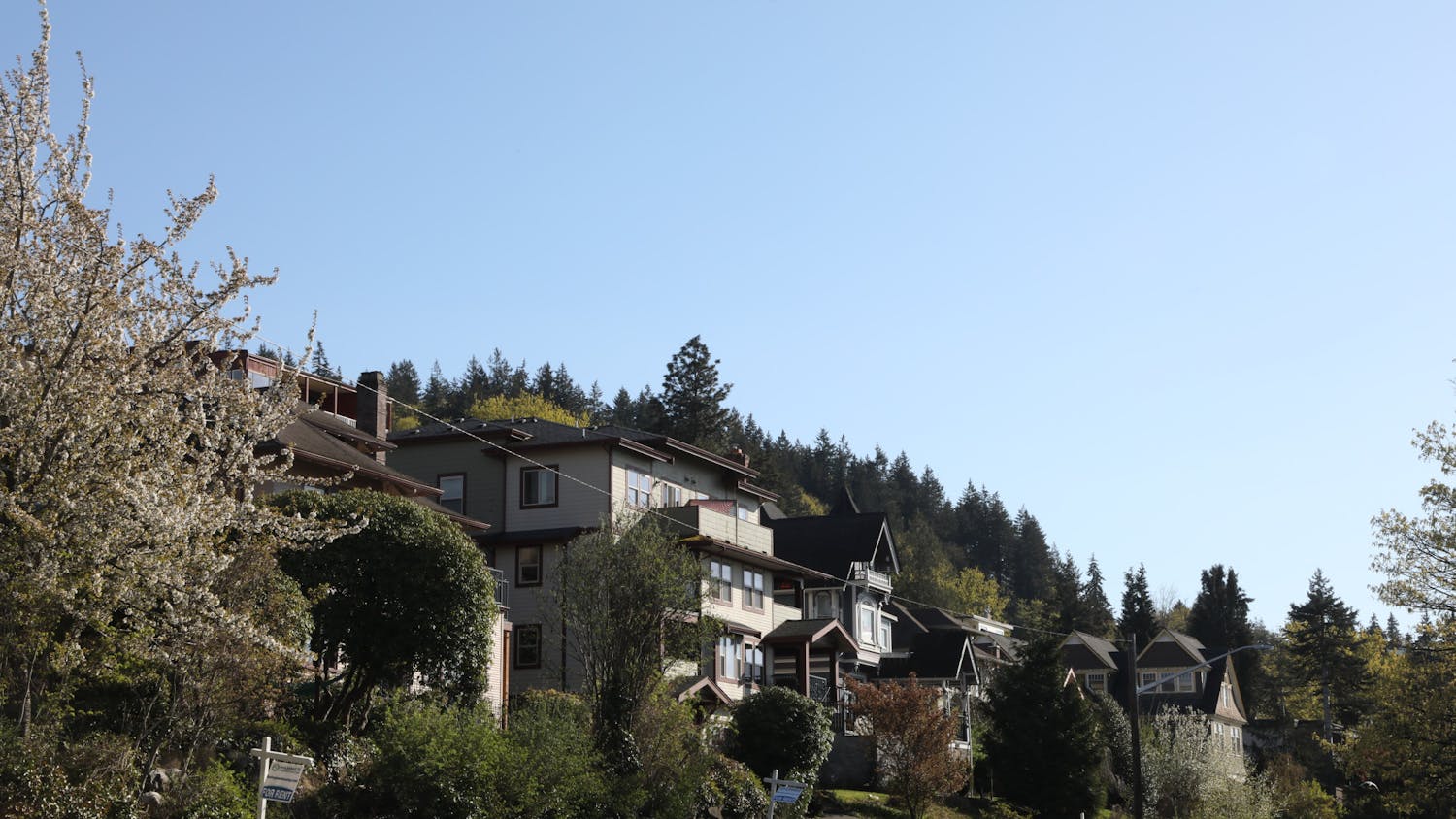Train tracks span the perimeter of Bellingham and Fairhaven. // Photo by Cassidy Tamburro By Cassidy Tamburro Western students and Bellingham residents are all too familiar with the sound of the train chugging along the waterfront, and some are starting to inquire about the train horn. Why does it go off once or twice and other times continues to honk? The city of Bellingham is divided into two separate quiet zones, the Waterfront quiet zone and the Fairhaven quiet zone. There are a total of 11 at-grade railroad crossings in the city, five in the Fairhaven quiet zone area and six in the Waterfront quiet zone area, according to Amy Cloud, media relations coordinator for communications and outreach at the Publics Work department. A system of devices must be installed at all at-grade crossings within a designated area in order to establish the quiet zone, she said. Devices such as “quad gates,” which block all lanes of traffic, are quite expensive when combined with the construction, costing at least $500,000 each, according to Cloud. Currently, Bellingham has devices installed at the Boulevard Park Pedestrian Crossing, the Fairhaven quiet zone area and the C Street Crossing in the Fairhaven quiet zone. “The City has identified Bayview Drive at Boulevard Park [Fairhaven quiet zone] as the next crossing to be constructed to quiet zone standards in the Six-Year Transportation Improvement Program (TIP),” Cloud said in an email. “This is a funded project currently under design and we expect it to be constructed in 2019.” It is also important to note that all of the crossings in a quiet zone must be converted to quiet zone standards before the quiet zone can be properly established. The city plans to have two of the five crossings in the Fairhaven quiet zone converted to standards by the end of 2019, according to Cloud. “Once the Port crossings are completed, the city will submit a notification to Burlington Northern Sante Fe (BNSF) that all devices have been installed within the proposed quiet zone and a diagnostic examination of each crossing will be performed utilizing the final constructed devices,” Cloud said. “Once it is determined that the devices all meet the quiet zone requirements, a Notice of Quiet Zone Establishment will be submitted in order to establish the Fairhaven quiet zone.” Courtney Wallace, the director of Public Affairs for BNSF, said train crews are permitted to sound their horns when there are people, animals or vehicles by the tracks, and they feel inclined to give warning. Crews may also sound a warning if there are construction workers within 25 feet of a live track or when lights and gates at the crossing are not functioning properly, she said. Cloud also noted the fact that BNSF rules require horns to be sounded when railway workers are present, as well as when safety hazards might be sighted. The Train Horn Rule and Quiet Zones webpage from the Department of Transportation states, “If a train is traveling faster than 60 mph, engineers will not sound the horn until it is within ¼ mile of the crossing, even if the advance warning is less than 15 seconds.” There is a federal rule that governs whistle use and states that the train horns must blow at a sound level of at least 96 decibels. Yet, some horns may blow at 110 decibels, which is now the maximum volume requirement, according to the Federal Railroad Administration. “The proscribed sequence is two long sounds, a short, followed by another long,” Wallace said. “A train crew can be fined by the FRA (Federal Railroad Association) for not sounding the horn enough. BNSF management and the FRA spot check train crews for compliance with the horn rule without the train crews' knowledge.” Wallace emphasized the importance of train whistles and the fact they save lives. The engineer of the locomotive has the discretion to sound the horn when he perceives a possible safety hazard. “Too many Americans are killed each year while ignoring signals at grade crossings or while trespassing on railroad tracks,” Wallace said. Train whistle regulations and quiet zones are put into place to prevent accidents from happening. There are many rules and safety precautions surrounding trains and their horns that are vital to public safety as well as that of railroad workers.





